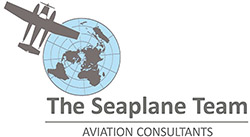Why water flying is so fascinating ?
Why seaplanes are so useful ?
This is the answer given by Cesare Baj
in the foreword of his 1992 book
“Seaplane Operations”
Seaplane: a word which evokes a glorious past and some special moments in the history of human flight. One thinks of the trips made around the world and of the polar expeditions of the twenties and thirties, Atlantic cruises, the Schneider cup, Agello’s speed record, the birth of Imperial Airways’ first intercontinental services with Shorts, of the French Aéronavale, with Latécoère, and especially Pan American’s transpacific service with Sikorski S 42’s, Martin 130’s and the Boeing 314, the famous Clippers.
Seaplane means an extreme variety of surroundings in which one may operate, many of which are just not available to other flying machines: the boundless oceans, the tropical rain forest, the historical center of the most wealthy and beautiful cities in the world, lakes, rivers, canals, artificial reservoirs, but also the Arctic pack, the glaciers or, if needed, a simple dew-covered field, from which it can be also possible to take off from again without trouble.
As far as uses are concerned, the seaplane is used to carry out some of the most difficult and heavy aircraft work there is. Think of trips made in Alaska or in areas of the Northamerican tundra, where the uniformity of the landscape joins with the almost complete lack of structures, assistance and radio aids. Think of operations in small bodies of water at high altitude or in the strong current of rivers. Think of the enormous distances covered by those who operate in the islands of the Indian or Pacific Ocean, or of the firefighting missions, which are extremely hard for pilots and machines.
The seaplane is also the best means of transport for air tourism: endurance, load and costs may not be as good as that of the aeroplane, but where there is water, it’s versatility is equal to that of a helicopter. It is the perfect means for a holiday, especially if one wants to be in close contact with nature.
Another great prerogative of the seaplane is the favouring of human contact, precluded from those who use means which move from airport to airport. This special means of transport is interesting and pleasant for the pilot and passenger, but also for whoever comes into contact with this particular means. The seaplane, in other words, brings aviation to areas in which it is unknown, and brings the joy of flying to people who would never of their own accord go to an airport, and who in many cases have never seen an aircraft up close. In this way, the important function of diffusing the differences in aeronautical culture takes place.
The seaplane is also among the safest of air means, because of the protection offered by the floats or, for aircraft without them, the greater general solidity of the structures. It is also a perfect means with which to learn how to fly. Who learns to fly on water receives a more complete foundation than who learns on land, if only for the fact that the seaplane pilot has the knowledge and traditions of two great universes, aviation and marine, which otherwise remain clearly separated.
But perhaps the most sublime aspect of the seaplane is that sense of freedom which comes from moving generally outside of the artificial world of airports, controlled air space, and aeronautical bureaucracy.
In water flight, one often operates in complete solitude and with the radio completely silent from the moment in which one gets into the aircraft until one leaves it at the end of the flight. It is an activity which allows one to return to the purest roots of flight, in which only essential factors play a part: the pilot, the technical means, and the natural elements.
